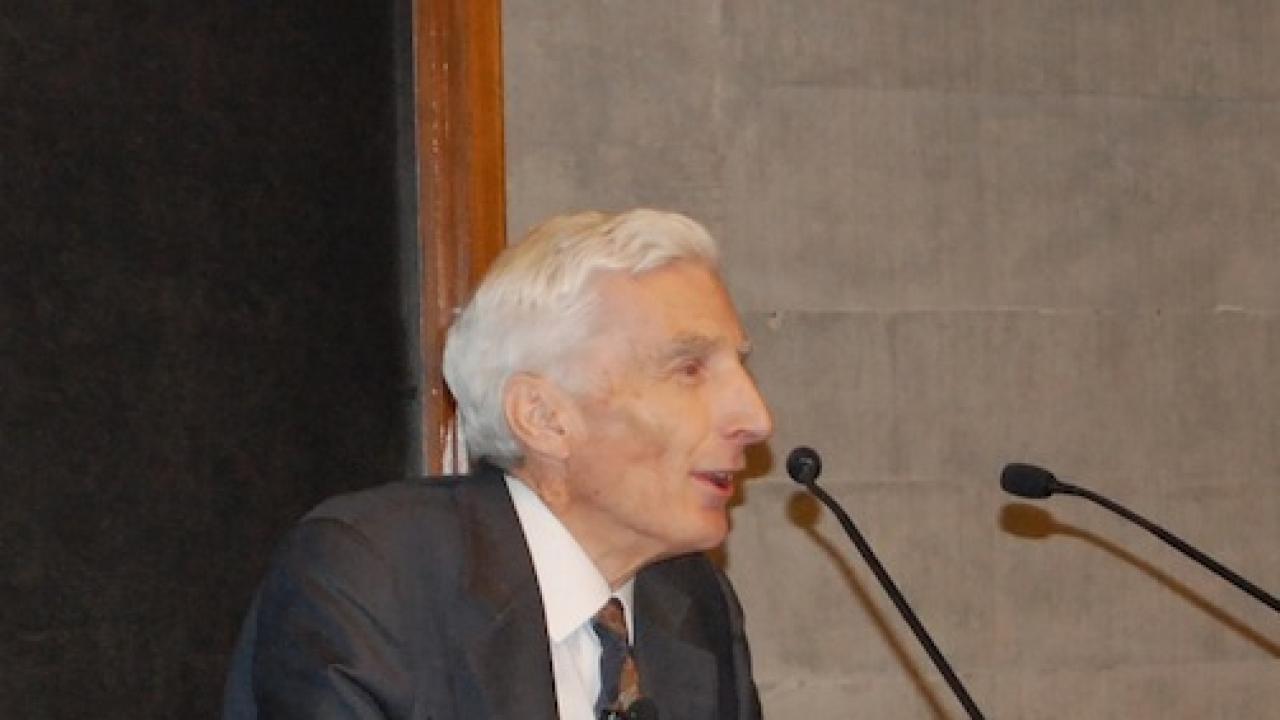
How did our universe evolve from a simple beginning to its
present complexity? Why is it expanding, and what lies beyond it?
Does life exist on other planets?
In a fascinating talk that explored the solar system and beyond,
Lord Martin Rees, eminent astronomer from Cambridge University,
addressed some of the most challenging questions facing astronomers
and physicists during a "Frontiers in Physics" lecture titled
"From Big Bang to Biosphere: Progress and Prospects in Space
Science" at the Industrial Physics Forum being held this week at
ICTP.
Rees's space survey started close to home, with an overview of
exploratory missions to Mars, Jupiter's satellites Io and Europa,
and Saturn, and expressed his hope that someday humans might be
able to make these high-risk journeys themselves.
Rees then extended his sights beyond the telescope, reviewing
techniques such as optical spectroscopy that can infer the presence
of planets based on the motions of distant stars. He said that by
June 2011, this technique had inferred 555 planets of masses
similar to Jupiter or Saturn.
For those hoping to find a new planet Earth, Rees explained that
the Kepler Mission sponsored by the US NASA programme has detected
evidence of several hundred Earth-sized planets. The next step is
to directly observe these inferences, and to that end projects such
as the European Extremely Large Telescope could be capturing images
of distant planets within decades.
Whether those Earth-sized planets support life depends on us
developing our own understanding of how life started on Earth.
"Only when we know if life on Earth was a fluke or not will we be
able to start looking for similar planets," said Rees.
Other presentations during the "Frontiers in Physics" session
included one on optical communications by Solomon Assefa,
researcher at IBM's Thomas J. Watson Research Center. Assefa, who
was designated by MIT as one of the world's top young innovators
for 2011, has developed a device called a nanophotonic
photodetector, a device that receives optical signals and converts
them to electrical signals. The nanophotonic device has the
potential to pioneer low-cost, energy-efficient high performance
computing and has crucial implications for the future of
electronics.
The "Frontiers" session ended with a presentation by Andrew Briggs
of Oxford University on quantum nanotechnology.
The 2012 Industrial Physics Forum is being held at ICTP during the
week of 16 April. For more details about the programme, please
visit the Forum's website.
















